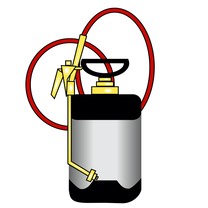 The June beetle, (Phyllophaga) AKA May beetle or June Bug, Genus of nearly 300 species of beetles belonging to the widely distributed plant eating subfamily Melolonthinae (family Scarabaeidea, order Coleoptera). There are more than 100 species of scarab beetles. In Texas they are considered to be white grubs in the pupae stage. Their biologies are similar, but species differ in distribution, habitat preference, length of life cycle and seasonal occurrence. You may also see the southern masked chafer, and the green june beetle. The Japanese beetle has made its way into northeastern United States and has migrated west and south, and now can be found in some Texas counties.
The June beetle, (Phyllophaga) AKA May beetle or June Bug, Genus of nearly 300 species of beetles belonging to the widely distributed plant eating subfamily Melolonthinae (family Scarabaeidea, order Coleoptera). There are more than 100 species of scarab beetles. In Texas they are considered to be white grubs in the pupae stage. Their biologies are similar, but species differ in distribution, habitat preference, length of life cycle and seasonal occurrence. You may also see the southern masked chafer, and the green june beetle. The Japanese beetle has made its way into northeastern United States and has migrated west and south, and now can be found in some Texas counties.
Life Cycle: Adults begin to emerge from the ground in spring. They can be found in numbers near lights. They can be found in numbers mid to late June in central Texas. The females are less attracted to lights. Females tunnel 2 to 5 inches into the soil and deposit between 50 and 200 small pearl-like eggs in the soil then buries them. The eggs become what is known in Texas a white grubs in 3 - 4 weeks. They develop through three stages (instars), the first two stages last about 3 weeks. The las larval stage remains in the soil from the fall through spring. The grubs develop into adults 3 to 6 inches deep in the soil. It takes about 3 weeks for the Adults to pupae from larva (grubs). Usually there is one generation per year, however in north Texas, it may take two years for a cycle.
Habitat, Food Source(s), and Damage: They have mouth parts for chewing. They are common in Texas turf grass especially Bermudagrass, St. Augustine grass and tall fescue. Large numbers of grubs can cause damage to lawns. Lawns will turn yellow and dir. When large numbers feed on the grass severely damaged grass can be rolled up like a carpet. They are known to feed on the roots of weeds, vegetable transplants and ornamental plants. They are considered a pest in relation to forage corn, sorghum and sugarcane. You may have encountered them when tilling a garden or by sifting through soil or under damaged turf grass.